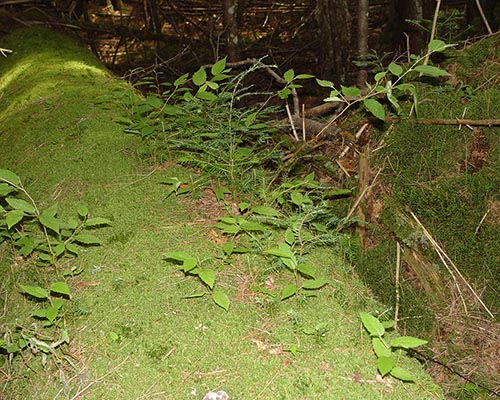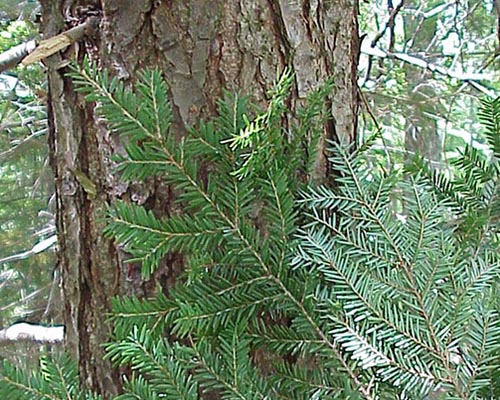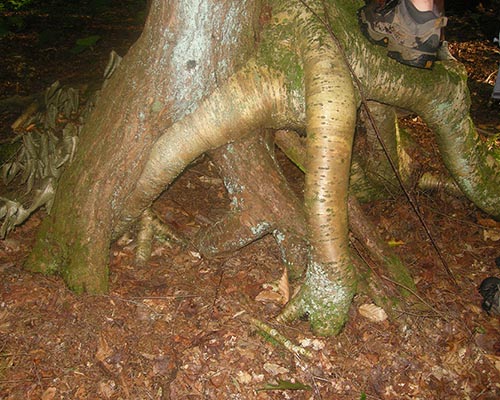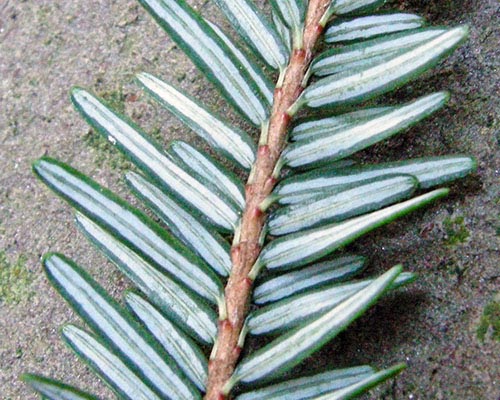Other stations along the Waldbauer trail discuss concepts such as the ecological niche, the “lifestyle” of an organism (see Ecological Niches), and secondary succession, the series of species that colonize and successively replace one another on a disturbed site (see Succession). An interesting and common example of these concepts in the Adirondacks is nurse logs.
A nurse log is a fallen, decaying tree upon which other trees are growing. The saplings growing on a nurse log take nutrients from it, feeding upon it long before it has had time to rot and turn to soil. Nurse logs also provide a safe haven from soil fungi that can kill seedlings. These logs thus facilitate new growth by creating an ecological niche that some saplings can exploit. They also promote a different pattern of succession than would occur if they were not present. In the Adirondacks, yellow birch is a common species to act as nurse logs as well as germinate on them. Many yellow birches live to over 300 years old.
Undisturbed forests contain dead and dying trees. Low-intensity selective logging can appear to be a harmless practice because the biggest trees, the ones that get logged, would have died soon anyway. However, logging removes the wood from the forest, thus removing nutrients and preventing the removed trees from becoming nurse logs. For this reason, it fundamentally alters the succession and ecology of a forest.
The eastern hemlock (Tsuga canadensis), a member of the Pinaceae family, is a conifer that commonly grows atop nurse logs. It is the most abundant Adirondack tree. In fact, the eastern hemlock makes up one-third of all of the trees in the Adirondacks. It has a profound impact on the ecosystems here. Chemicals called tannins in the bark of the eastern hemlock give the bark its distinctive dark gray-red color and protect it against bacteria and insects. The brownish tinge of most Adirondack waters comes from the tannins of hemlocks, which leach out from dead and decaying trees. Hemlocks are harvested not only for wood but also for tannins used to tan leather.
Hemlocks that started as saplings on nurse logs can be recognized by their tangle of roots above ground, still embracing the spot left by the now completely decomposed nurse log. Young eastern hemlocks can be recognized by their disorganized, shaggy shape, which is different from the regular shape of many other conifers. However, as they grow to more than 100 feet, they become more uniform in shape.
Eastern hemlock has short, flat needles that grow in a flat formation around its stem. Each needle has two thin white stripes on its underside and a tiny stalk, which attaches the needle to the stem at an angle. Since eastern hemlock is evergreen (see the Winter Survival station), its needles provide another means of identification year-round.
Unfortunately, eastern hemlock is threatened by the hemlock wooly adelgid (HWA) (Adelges tsugae), a sap-sucking invasive insect accidentally introduced from Asia (see Non-Native Species). This tiny insect, whose presence is evidenced by the white frass it produces at the base of hemlock needles, is devastating stands of eastern hemlock in the southern Appalachians and has spread to New York. As climate change warms temperatures (see Climate Change), the hemlock wooly adelgid is likely to invade the Adirondacks with profound effects for the structure and function of ecosystems. It is hoped that biological control of the adelgid by promoting beetles that eat it will be possible, but long-term efficacy is unclear. Report evidence of this invasive species on the New York State Department of Environmental Conservation website.




